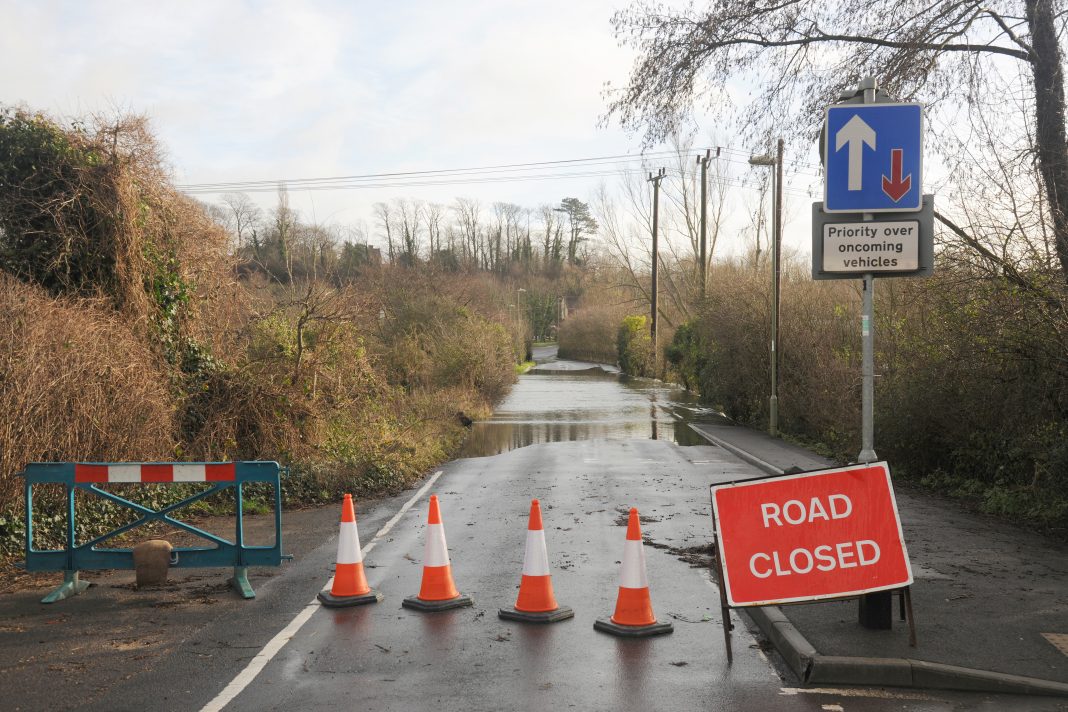One in six UK properties are now at risk of flooding over the next 15 years. Murray Ross, head of Project Management Profession at global engineering consultancy Tetra Tech, explores how major flood defence projects must shift from passive adoption of data analytics to an active pursuit, and how investing more in people holds the key to its success
Major flooding in the UK used to be reasonably rare. While there were some areas in more danger than others, these would flood maybe once a decade in the winter. However, we are now witness to an unavoidable truth – flooding is becoming far more common, with reports of major incidents happening all over the UK, often multiple times a year.
This is clearly down to climate change and the risk is unlikely to diminish. In fact, a recent joint report from Flood Re and ABI (Association for British Insurers) found that one in six UK properties are currently at risk of flooding over the next 15 years.
While the government has pledged a record investment of £5.2bn over the next six years into flood defences, the threat is growing so rapidly that without careful planning, monitoring, and forecasting, these new assets could well be obsolete by the time they are completed.
Harnessing data is key to avoid this. Creating an extensive digital picture of asset performance and flood variables across multiple sources, including defences, can help better direct investment, highlight repairs required, and more accurately predict weather warnings. But currently, information is being collected passively and sporadically, with clients often lacking the skills and capacity to properly analyse and action the results.
We simply cannot afford to not make this change. Yet despite the clear and pressing need, those involved in the creation, delivery and management of flood infrastructure are struggling to accommodate digital demands.
Complacency in creating digital assets
Firstly, the government bodies overseeing the procurement and upkeep of flood infrastructure are often reluctant to move away from manual processes and embrace AI-driven decision making, which can better regulate and monitor fluvial systems and networks.
The main barrier to this is the perceived cost of upgrading assets against little return. Installing sensors and AI computing capacity is still seen in many circles as ‘experimental’, rather than supporting the inevitable digital shift. And despite the tried and tested methods already used in countries like the Netherlands, investing so much cash into tech upgrades is considered too risky.
This is partly driven by concern that the public are less likely to take flood warnings seriously, should they be issued by a computer – despite most Met Office weather alerts already being reported by an advance computing system.
Underpinning all this are rigid procurement models which insist on clearly defined scopes of work from government officials to get a new idea to market, despite them often lacking the capacity or experience to put forward true digital innovation. While inflexible frameworks deter private sector experts from submitting innovative propositions which are unlikely to be approved without a competitive market approach.
Working in tandem
It is not only a lack of capability in assets which is preventing data utilisation. Despite the number of new flood management technologies available, organisations including the Environment Agency, local authorities and consultancies are experiencing a chronic shortage of talented people who have the skills to implement them.
This lack of understanding breeds apprehension, and AI is often accused of reducing jobs. But when considering the amount of people changes that are vital to delivering a digital shift, it’s clear that it actually represents an opportunity.
Implementing new technologies correctly gives us the opportunity to work with data – not against it – to enhance our ability to manage floods, understand how they may change in the future and build a safer environment for us to cohabit. The only way to get to this stage, is by investing more in people.
Skills for success
The entire industry – both clients and consultants alike – needs a significant recruitment and training drive towards digital delivery skills.
This goes beyond hiring new roles of specialised data scientists and analysts. We need a broad mix of flood experts – be they engineers, environmentalists, ecologists, or planners – to all have a solid understanding of how best data can be harnessed, capable of merging this knowledge with their existing expertise to find the best solutions.
Likewise, project and programme management professionals continue to be critical for the delivery and maintenance of flood infrastructure. While skilled teams are vital to ensuring any new data upgrades are delivered on time and on budget to help reassure clients, again, automation, analytics and AI technologies all play a much larger role in identifying risks and enabling the successful delivery of project outcomes and benefits, and these teams need upskilling too.
Without this foundation in place, new technologies will always be limited in flood management. There has got to be clear understanding of the benefits data can bring and a confidence to use it, from both government and consultants, to enact real change and to be truly transformational.
Murray Ross

Head of Project Management Profession
Tetra Tech
Twitter: @TetraTechEurope
LinkedIn: Tetra Tech Europe

















